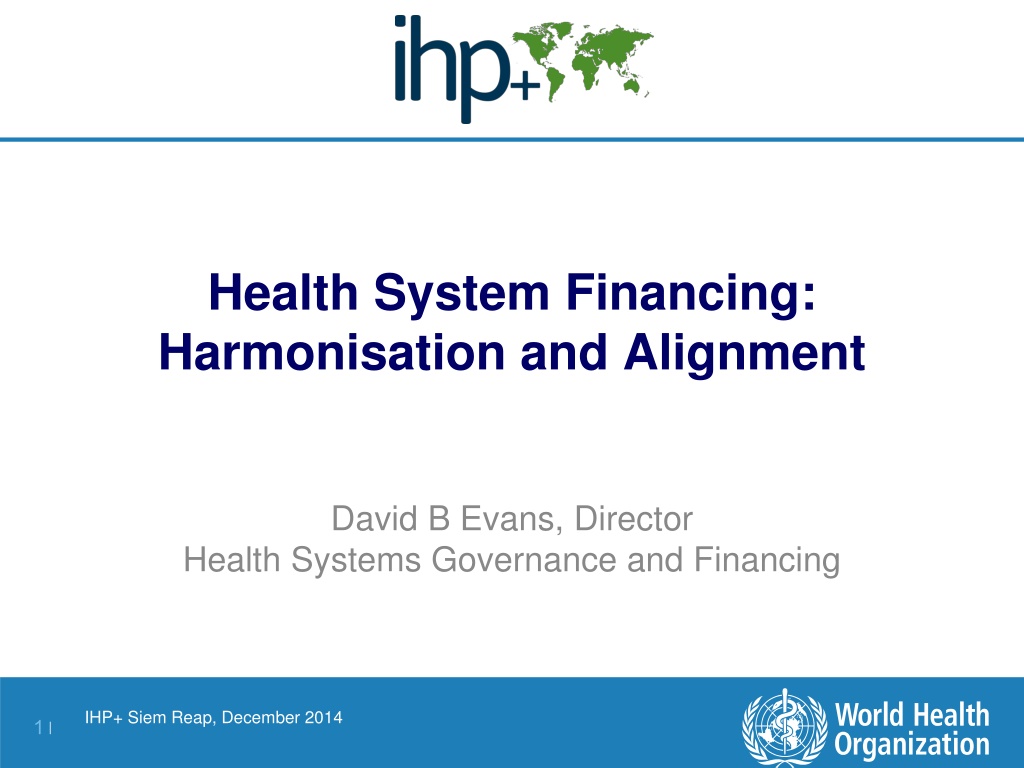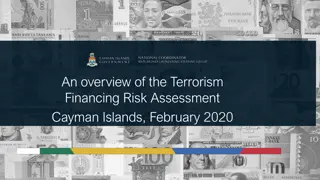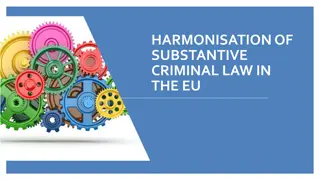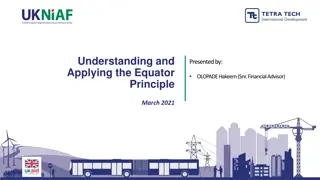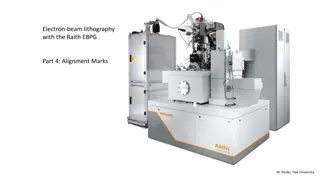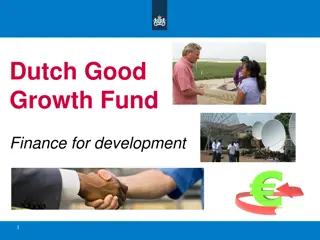Harmonisation and Alignment in Health System Financing
Explore the importance of harmonisation and alignment in health system financing, focusing on areas for accountability, costing, and resource tracking. Learn about tools developed and utilized by various organizations, including the OneHealth Tool, to support effective implementation and governance in health financing.
Download Presentation

Please find below an Image/Link to download the presentation.
The content on the website is provided AS IS for your information and personal use only. It may not be sold, licensed, or shared on other websites without obtaining consent from the author. Download presentation by click this link. If you encounter any issues during the download, it is possible that the publisher has removed the file from their server.
E N D
Presentation Transcript
Health System Financing: Harmonisation and Alignment David B Evans, Director Health Systems Governance and Financing IHP+ Siem Reap, December 2014 1|
Areas for Harmonisation and Accountability in Health Financing Health Financing Policy Development: Technical and Policy Support to countries: P4H Network Fund Flows How much is required: Costing national (or sub- national) plans and strategies Tracking use of funds: who spends, on what, for whom? Links to results health accounts Complements public financial management IHP+ Siem Reap, December 2014 2|
The roles of costing and resource tracking in the planning process Essential information for Effective Implementation and Accountability/Governance 3
OneHealth Tool Development 2008: a meeting in Senegal reviewed 13 commonly used tools Agreement to develop a joint UN model. Inter-Agency Working Group on Costing (IAWG-COSTING) established in 2008 (WHO, UNICEF, WB, UNAIDS, UNFPA, UNDP). Partner support: The Global Fund to fight Aids, TB and Malaria, The Global Health Workforce Alliance, The Health Metrics Network, Bilateral agencies, IHP+, have provided funding and technical support. Other partners: UNIFEM and projects like USAID deliver, Optimize provide technical inputs. Health Planners in Country Reference Group provide technical and user related inputs into model development (Burkina Faso, Cap Verde, Ghana, Mali, Mauritania). 4
Who is using the OneHealth Tool? Country planning Ministries of Health WHO UNFPA USAID (HPP) GFATM Independent consultants (trained) Futures Institute + Futures Group Global publications Various analysis published in e.g., the Lancet, including: Commission for Investing in Health WHO/PMNCH Global Investment Framework for women's and children's health Who is supporting the development of the OHT? Inter-Agency Working Group on Costing (IAWG-COSTING) established in 2008 (WHO, UNICEF, WB, UNAIDS, UNFPA, UNDP). UNWOMEN have since joined the group. Partner support: The Global Fund to fight Aids, TB and Malaria, The Global Health Workforce Alliance, The Health Metrics Network, Bilateral agencies, IHP+, have provided funding and technical support. Other partners: and projects like USAID Deliver, etc., provide technical inputs.
OneHealth Tool: Application in country This includes countries that have undertaken trainings and are about to commence applications. Countries in bold have completed the application. Updated November 10, 2014. Specific programme focus: China (maternal and child health) Ethiopia (reproductive health focus) Malawi (maternal and child health) Morocco (maternal and newborn health) Nigeria (strategic malaria plan). Nigeria (HIV/AIDS plan). Paraguay (national condom program ) Papua New Guinea (national plan for child, maternal and newborn health) Rwanda (HIV/AIDS strategic plan) Senegal (national investment plan) Sri Lanka (national and sub-national MCH and nutrition plan) Zambia (malaria and child health) Viet Nam (maternal and child health) Health sector wide : Angola Benin (2012-2015) Botswana Burkina Faso (2011-2013) Cape Verde (2012-2016) Chad DRC Ethiopia Gambia Haiti Kenya (2012-2017) Lesotho (2013-2017) Liberia (2011-2021) Madagascar Malawi Mozambique (2013-2017) Sudan (2012-2016 ) South Africa: two provinces Tanzania / Zanzibar
The roles of costing and resource tracking in the planning process Essential information for Effective Implementation and Accountability/Governance 7
Health Accounts CURRENT expenditure dimensions Consumption Functions (HC) and Beneficiaries: Age, Gender, Disease, Subnational level Health Care Financing Funding (FS, FS.RI) Purchasing (HF, FA) Production Providers (HP) Inputs (FP)
Expenditure by Disease/Health Problem - High-level agreement February 2014, disease specific partners and funders (UNAIDS, UNFPA, Global Fund, GAVI, Gates, WHO disease departments agreed to integrate all resource tracking work to strengthen quality of results and rationalize costs Health accounts becomes the platform for tracking disease/condition expenditures (1 tool) agreement extended to other finance tracking work: facility-based costing and tracking future funding Health accounts results become a public good
PRODUCTION TOOL (HAPT) HAPT offers an organized & sustainable tracking system built in SHA 2011 classifications countries can adjust as long as they remain within the framework expenditure by disease is now part of health accounts: specific and aggregate data fit together systematic approach from setting up the accounts to collecting the data and mapping it, HAPT frames the production and ensures consistency across the years; high user-friendliness sustainable approach (eliminates redundant steps) replication of health accounts studies (stability over time) memorization of mapping between national records coding to SHA 2011 coding => allows for automatic mapping next years IHP+ Siem Reap, December 2014 10|
COUNTRY WORK IHP+ Siem Reap, December 2014 11|
Conclusions PFM important Is being complemented by other activities in health system financing where harmonization and alignment is also taking place Technical and policy support on financing policies and strategies Costing national health strategies and plans Tracking national expenditures through health accounts IHP+ Siem Reap, December 2014 12|
